Architecture in Omaha, Nebraska, represents a range of cultural influences and social changes occurring from the late 19th century to present.
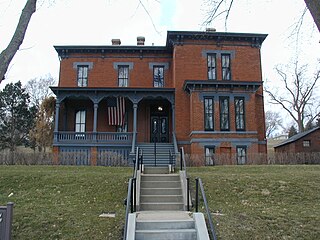
The General George Crook House Museum is located in Fort Omaha. The Fort is located in the Miller Park neighborhood of North Omaha, Nebraska, United States. The house was listed on the National Register of Historic Places in 1969, and is a contributing property to the Fort Omaha Historic District.

St. John African Methodist Episcopal Church was the first church for African Americans in Nebraska, organized in North Omaha in 1867. It is located at 2402 North 22nd Street in the Near North Side neighborhood. The building is listed on the National Register of Historic Places. The building was constructed in the center of Omaha's North Side in the Prairie School architecture style. Prairie School architecture is rare, and this architectural gem in urban Nebraska is particularly unusual for being designed and built in the 1920s, after the Prairie Style's rapid loss of popularity beginning after 1914.

The Jewell Building is a city landmark in North Omaha, Nebraska. Built in 1923, it is listed on the National Register of Historic Places. Located at 2221 North 24th Street, the building was home to the Dreamland Ballroom for more than 40 years, and featured performances by many touring jazz and blues legends, including Duke Ellington, Count Basie, Louis Armstrong, Dizzy Gillespie, and Lionel Hampton.

Holy Family Church was built in 1883 at 1715 Izard Street, at the intersections of 18th and Izard Streets in North Omaha, Nebraska within the Roman Catholic Archdiocese of Omaha. It is the oldest existing Catholic Church in Omaha, and is listed on the National Register of Historic Places.

The Drake Court Apartments and the Dartmore Apartments Historic District, built between 1916 and 1921, is located at Jones Street from 20th to 23rd Streets in Midtown Omaha, in the U.S. state of Nebraska. Built in combined Georgian Revival, Colonial Revival and Prairie School styles, the complex was designated a City of Omaha Landmark in 1978; it was listed on the National Register of Historic Places as a historic district in 1980. The historic district originally included 6.5 acres (2.6 ha) with 19 buildings. In 2014, boundary of the historic district was expanded by 0.74 acres (0.30 ha) include three additional buildings, and decreased by 3 acres (1.2 ha) to remove open space and parking that had been re-purposed, for a new total of 4.24 acres (1.72 ha). The district was also renamed to Drake Court Historic District.

The Bemis Park Landmark Heritage District is located in North Omaha, Nebraska. Situated from Cuming Street to Hawthorne Avenue, Glenwood Avenue to 33rd Street, Bemis Park was annexed into Omaha in 1887, and developed from 1889 to 1922. The district was designated an Omaha Landmark in 1983.

The Notre Dame Academy and Convent is located at 3501 State Street in the Florence neighborhood on the north end of Omaha, Nebraska. It is significant for its ethnic association with the Czech population in Nebraska as the only school and convent of the Czechoslovakian School Sisters de Notre Dame in the United States. The building was listed on the National Register of Historic Places in 1998. The groups were home to a high school for girls from 1925 through 1974.

The Livestock Exchange Building in Omaha, Nebraska, was built in 1926 at 4920 South 30 Street in South Omaha. It was designed as the centerpiece of the Union Stockyards by architect George Prinz and built by Peter Kiewit and Sons in the Romanesque revival and Northern Italian Renaissance Revival styles. In 1999 it was designated an Omaha Landmark and listed on the National Register of Historic Places. The Union Stockyards were closed in 1999, and the Livestock Exchange Building underwent an extensive renovation over the next several years.

Jobbers Canyon Historic District was a large industrial and warehouse area comprising 24 buildings located in downtown Omaha, Nebraska, US. It was roughly bound by Farnam Street on the north, South Eighth Street on the east, Jackson Street on the south, and South Tenth Street on the west. In 1989, all 24 buildings in Jobbers Canyon were demolished, representing the largest National Register historic district loss to date.

The Christian Specht Building is located at 1110 Douglas Street in downtown Omaha, Nebraska. It is the only existing building with a cast-iron facade known in Nebraska today, and one of the few ever built in the state. The building was deemed an Omaha landmark in 1981, and was listed on the National Register of Historic Places in 1977.
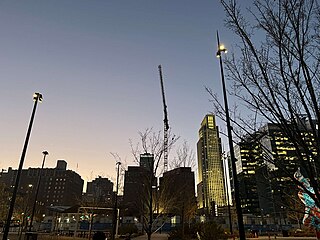
Downtown Omaha is the central business, government and social core of the Omaha–Council Bluffs metropolitan area, U.S. state of Nebraska. The boundaries are Omaha's 20th Street on the west to the Missouri River on the east and the centerline of Leavenworth Street on the south to the centerline of Chicago Street on the north, also including the CHI Health Center Omaha. Downtown sits on the Missouri River, with commanding views from the tallest skyscrapers.

The Blackstone Hotel is a historic hotel located at 302 South 36th Street in the Blackstone neighborhood of the Midtown area in Omaha, Nebraska. Built in 1915, it was declared an Omaha Landmark in 1983 and listed on the National Register of Historic Places in 1985.

The Nash Block, also known as the McKesson-Robbins Warehouse and currently as The Greenhouse, is located at 902-912 Farnam Street in Omaha, Nebraska. Designed by Thomas R. Kimball and built in 1907, the building is the last remnant of Downtown Omaha's Jobbers Canyon. It was named an Omaha Landmark in 1978, and was listed on the National Register of Historic Places in 1985.

Packer's National Bank Building is located at 4939 South 24th Street in the South Omaha Main Street Historic District in south Omaha, Nebraska. It was built in 1907. In 1984, it was designated an Omaha Landmark and, in 1985, it was listed on the National Register of Historic Places.

The Bemis Bag Company Building is a historic building located in downtown Omaha, Nebraska. Built in 1887 in a commercial style, the building was designed by the prolific Omaha architecture firm of Mendelssohn and Lawrie. It was designated an Omaha Landmark on September 12, 1978, and was added to the National Register of Historic Places on January 11, 1985. In addition to its own listing on the NRHP, the Building is also included in the Warehouses in Omaha Multiple Property Submission.
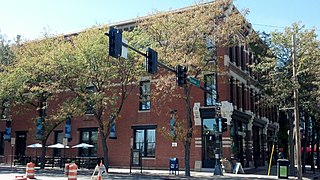
The Poppleton Block is located at 1001 Farnam Street in Downtown Omaha, Nebraska. The building was built in 1880 for Omaha lawyer and politician A.J. Poppleton, and was designated an Omaha Landmark on July 13, 1982, and was listed on the National Register of Historic Places later that year.
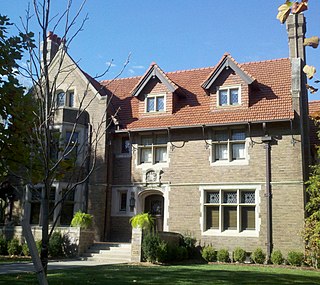
The Brandeis–Millard House is located in the West Farnam neighborhood, which is part of the Gold Coast Historic District in Midtown Omaha, Nebraska. Its carriage house is located at 3815 Dewey Avenue in the same area. Listed on the National Register of Historic Places in 1980, it was designated an Omaha Landmark on June 10, 1986.
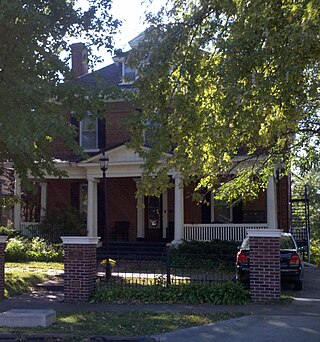
The Breckenridge–Gordon House is located at 3611 Jackson Street in Midtown Omaha, Nebraska. Built in 1905, the house was designed by Thomas Rogers Kimball for a prominent local attorney. Designated as an Omaha Landmark in 1982, the residence is located in the Gold Coast Historic District, which is listed on the National Register of Historic Places.




















